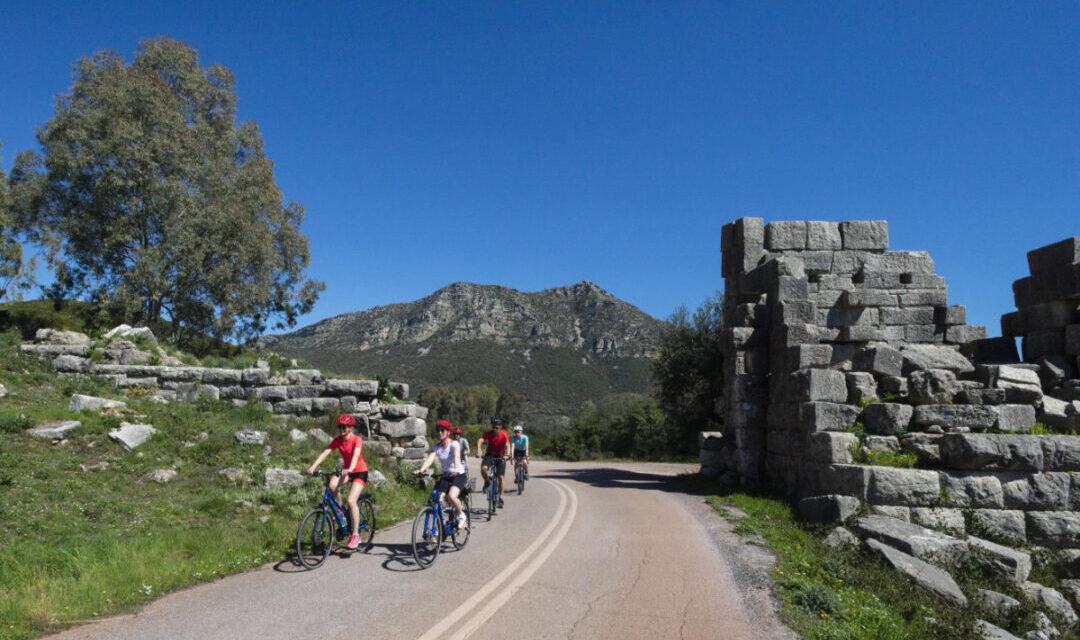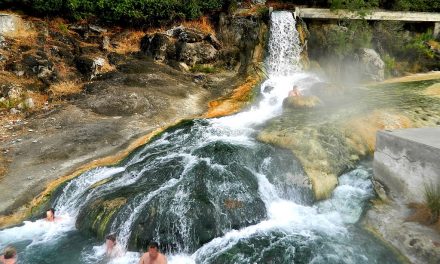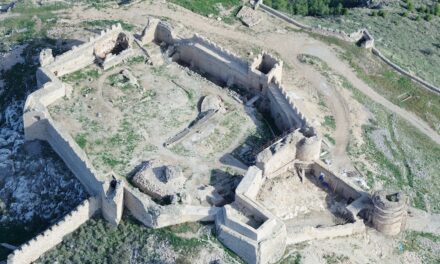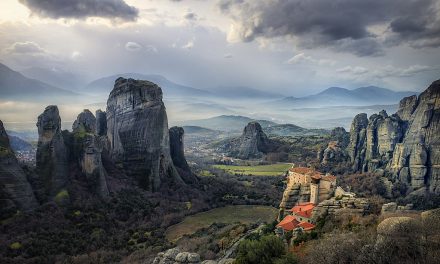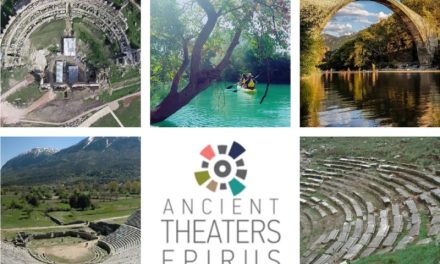Cycling is an activity that allows you to discover the natural and cultural treasures of a region in the most pleasant and environmentally friendly way. With its mild climate, Mediterranean landscapes, rich history and world-renowned monuments, Greece is a tourist paradise for cyclists. Cycle tourism in Greece has grown significantly in recent years, and increasing demand has led to the development of related services.
Although the 3 EuroVelo routes that cross Greece are not completely signposted yet, infrastructure has developed and rural roads with low traffic provide great opportunities for cycle touring. Furthermore, more and more cities are building cycle paths and operating public bike-sharing schemes. The bike routes take you through breathtaking scenery and can at points be particularly challenging physically, due to the country’s mountainous terrain. Whether you want to push your limits or simply to discover hidden attractions off the bitten path, these routes will not leave you wanting.
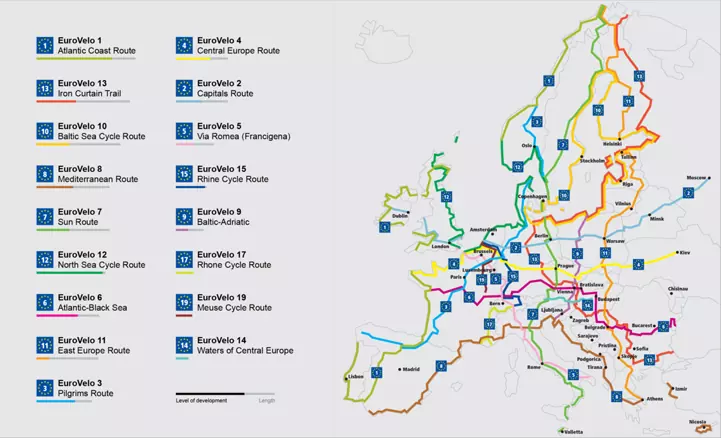
The three European cycling routes that pass through Greece are EuroVelo (EV) 8, 11 and 13. The Mediterranean route EV8 (5,388 km), which spans the south of Europe, starts off in Cadiz in Andalusia, Spain and ends in Athens through Igoumenitsa. Moving from north to south, the EV11 route (5,964 km) runs from Norway’s North Cape to Athens via Thessaloniki, while the new EV13 route (6,800 km) runs from the Arctic Ocean and the Barents Sea, on the border between Norway and Russia, to the Black Sea, crossing Greece in two sections: from Promachonas to Serres to Exochi to Drama, and from Kyprinos to Kastanies to Evros, along the Ardas river.
In more detail:
EuroVelo 8 – Mediterranean Route

If you take EuroVelo 8, you’ll enter Greece via the border region of Epirus, without losing sight of the legendary Ionian Sea with its clear blue waters. From Igoumenitsa to Sivota, from Parga to Preveza, cyclists can visit historic villages such as Zalogo, Souli and Zagori, ride south to western Greece, from Astakos and Vonitsa to the Missolonghi-Aitoliko lagoons complex, where the deltas of the Acheloos and Evinos rivers meet. Facing the Echinades islands, cyclists cross the Antirrio-Rio bridge to arrive in Patras, the largest city in the Peloponnese, nationally famous for its carnival which has a history of nearly two centuries.
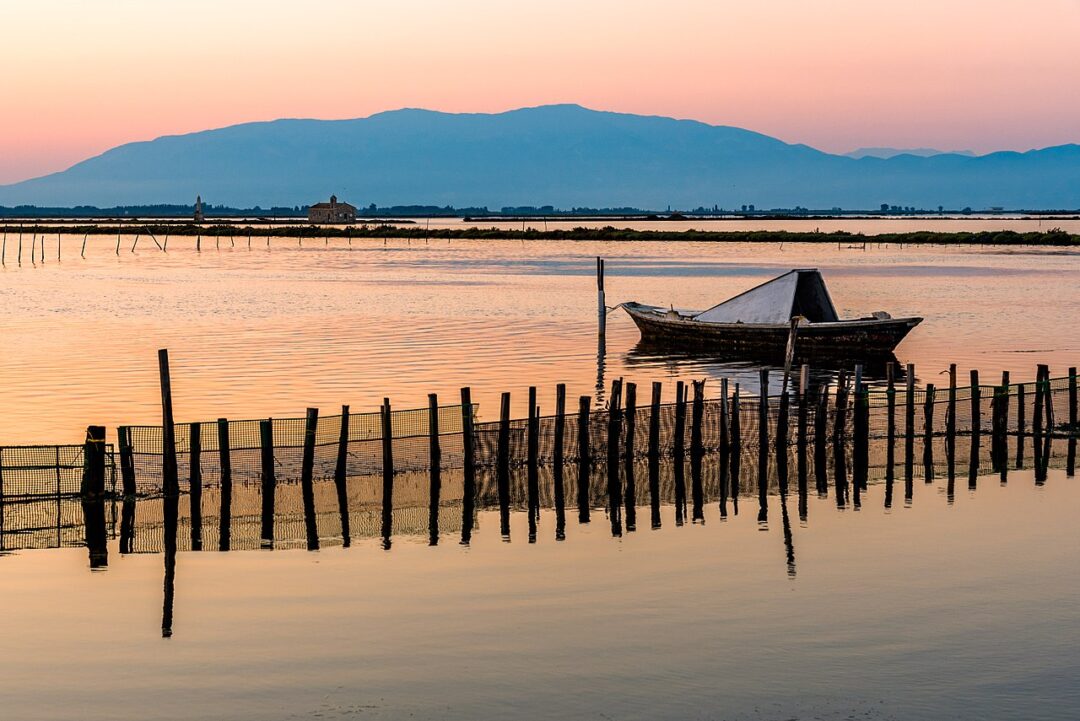
As they continue on this seaside route, they reach Xylokastro, ancient Sicyon and Kiato, later Corinth (close to the ruins of the famous ancient city of the same name) and Loutraki, a seaside resort known for its thermal springs. Following the coast from Megara they get to Eleusis, European Capital of Culture for 2023 and the site of the Eleusis Mysteries, Ancient Greece’s most renowned religious rituals. Finally the route takes them to Attica and the city of Athens, home to some of Greece’s most prominent cultural sites, including the famed Acropolis.
EuroVelo 11 – East Europe Route
The EuroVelo11 route begins in southeastern Norway and takes the traveler south to sunny Greece. Cyclists enter the country via Evzonοi (Kilkis) in central Macedonia, where the river Axios flows through the Valley of Paionia, praised by Homer and ancient poets and philosophers as one of Greece’s natural beauties.
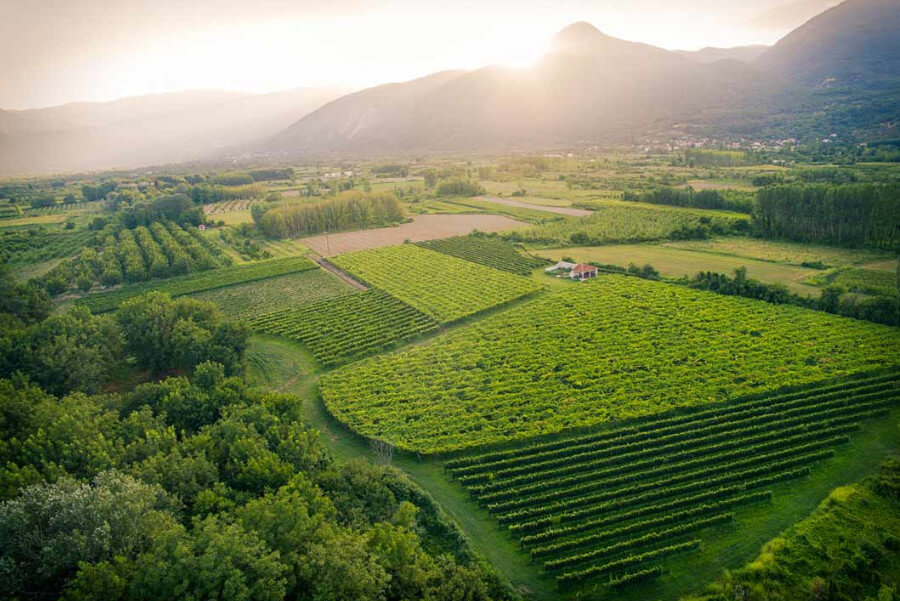
The route passes through the famous wine roads of Goumenissa, which produce Protected Geographical Indication (PGI) wines, then proceeds to Pella, the capital of the ancient Macedonian state. The next stop is Thessaloniki, a captivating destination in Greece, known for its rich history, gastronomy and lively atmosphere. In 1988, 15 of the city’s most beautiful early Christian and Byzantine monuments were inscribed on UNESCO’s World Heritage List.
Don’t miss Mount Athos, the country’s largest monastic community. Heading south, you’ll come across Vergina and the archaeological site of Aigai, where one can visit the Macedonian tombs, including the tomb of Philip II. The route follows the east coast of Greece, offering superb views of Mount Olympus and Mount Pelion, passing through the town of Volos. The route continues to the historic sites of Thermopylae, Chaeronea and its famous lion, Thebes, Plataea and Eleusis, ending at the Acropolis.
EuroVelo 13 – Iron Curtain Trail
The European part of the EuroVelo13 known as the “Iron Curtain Trail” invites cyclists to retrace and experience one of the most important parts of the European continent’s history. Holding the title of longest EuroVelo route, with 9,950 km, the EV13 has something for every taste, from the vineyards of southern Czechia and northern Austria to the mountainous borders of Bulgaria and Greece.
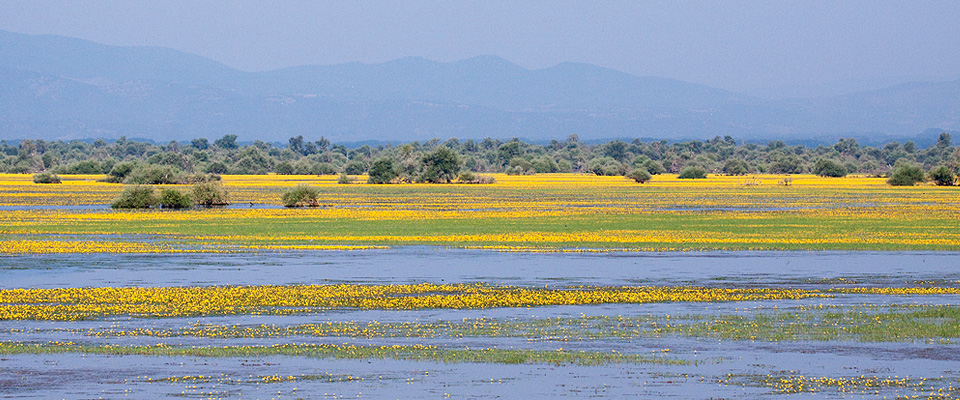
The route, which crosses 20 countries, enters Greece from Petrich, Bulgaria, through the Promachonas border crossing, to north of the National Park of Lake Kerkini. Although the Greek section of the Iron Curtain Trail is fairly short, cyclists have the opportunity to cycle through the former “surveillance zone”, a heavily militarized area along the border between Bulgaria and Greece. The route follows the Metaxas Line and Fort Roupel, then skirts the Greek-Bulgarian border to the Forte Lisse, the last point on the route before leaving the Exochi border crossing in Drama.
The route then follows the natural border of Rodopi, passing through the prefectures of Drama, Xanthi and Rodopi, and re-enters Greece at the Kyprinos border crossing at the region of Evros. The route continues along the River Ardas, on whose banks the eponymous festival takes place in the summer, featuring camping facilities and music from Greece and the Balkans, and attracting many young people.
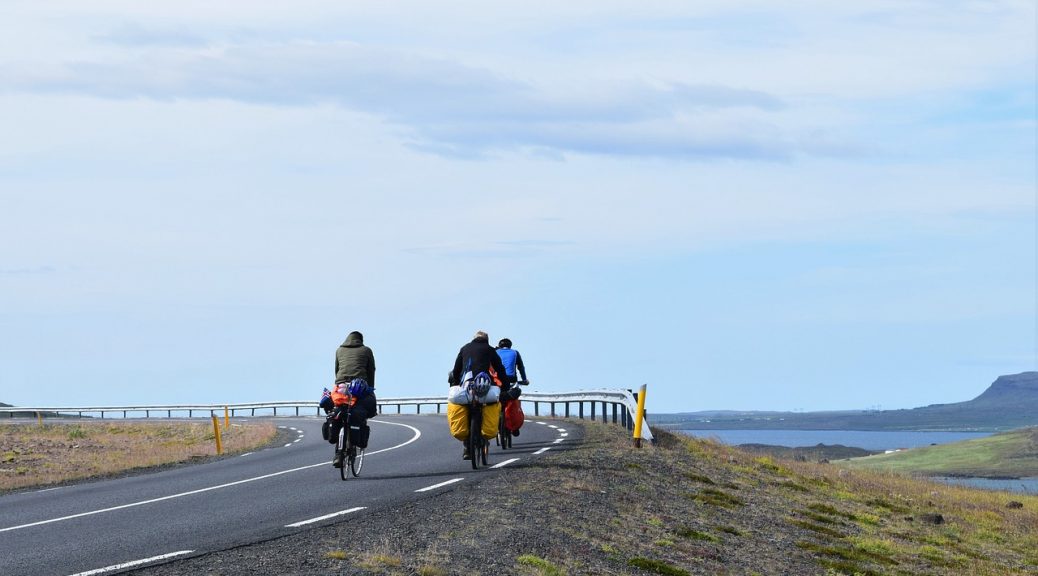
EuroVelo Project
EuroVelo is a project by the European Cyclists’ Federation (ECF, a non-profit member-based umbrella federation), aimed at developing a network of high-quality, long-distance cycle routes linking the whole of Europe. These routes can be used by tourists as well as local residents who commute by bike.
The plan for the first twelve EuroVelo routes were conceived in 1995, and EuroVelo was officially launched in 1997. The first EuroVelo route “opened” in 2001, and the network continues to expand. It is not yet fully developed, and its 17 routes are at different stages of development, regarding issues such as safety. To help cyclists know what type of route they’re going to encounter, the captioned EuroVelo map classifies the state of progress of the routes into four categories, including the “Certified” category. By now, 67% of the network of over 92,000 km is ready for cycling. The European Cyclists’ Federation (ECF) coordinates, supervises, monitors and quantifies all this, in collaboration with national partners.
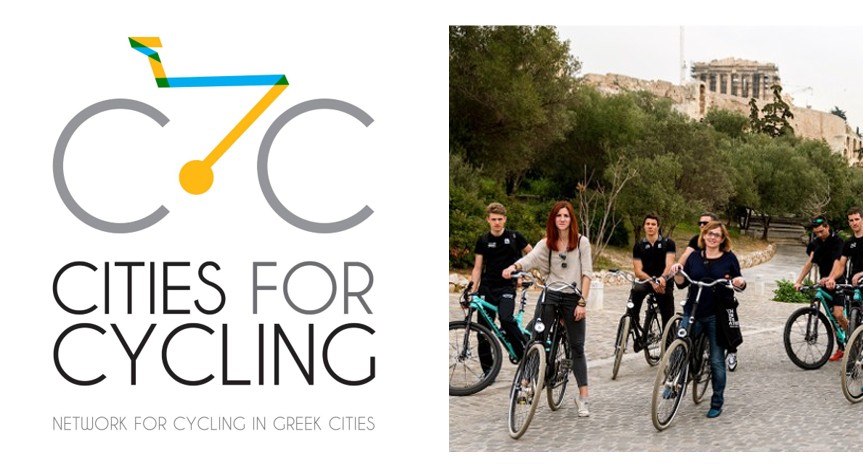
The national partner in Greece is the NGO Cities for Cycling, which is implementing a series of actions to promote the use of bicycles and the development of cycle tourism in Greece. One of its priorities is to create a platform for the exchange of knowledge and experience between Greece and European cities.
The National EuroVelo Coordination Centre for Greece has recently been set up, following a memorandum of cooperation signed between the Ministry of Infrastructure and Transport, the Ministry of Tourism, the Central Union of Greek Municipalities and the organization “Cities for Cycling”, with the aim of monitoring, improving and promoting the three EuroVelo routes in Greece.
Based on the original article from Grèce Hebdo
Intro photo source: eurovelo.gr

